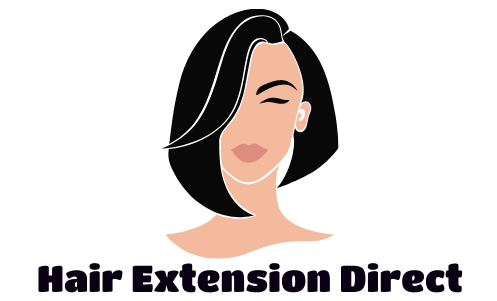Have you ever wondered how you see people who have the perfect hair on social media or even in real life? Well, sometimes, the perfect hair is just the perfect extension.
Hair extensions are pieces of human or synthetic hair that are attached to your natural hair to give you the exact type of hair look you want to wear (maybe longer or fuller hair).
The hair extensions can be clipped, glued, or sewn into your natural hair, and you can also wear them as ready-made wigs. They are available in many colours and styles; however, not all hair extensions are created equal.
There are many types of hair extensions on the market that vary in quality, volume and style. It can be hard to know which one is right for you.
In this article, I will discuss the different hair extension types and how to choose the right one for you.
- What Are Hair Extensions?
- What Are Human Hair Extensions Made Of?
- What Are Synthetic Hair Extensions Made Of?
- What Are The Different Types Of Hair Extensions?
- What Are The Best Types Of Hair Extensions?
- How Long Do Hair Extensions Last?
- Do Extensions Damage Your Real Hair?
- How Do I Know Which Type Of Hair Extensions I Should Get?
- Should I Get Synthetic Or Natural Hair Extensions?
- How Much Do Hair Extensions Cost?
- How Do You Take Care Of Hair Extensions?
- When Should You Remove Hair Extensions?
- Pros And Cons Of Hair Extensions
- Conclusion
-
FAQs
- Q: What does a hair extension do?
- Q: How long does a hair extension last?
- Q: How much does a hair extension cost?
- Q: What are the different types of hair extensions?
- Q: How do I know which type of hair extension is right for me?
- Q: Can I colour my hair after getting a hair extension?
- Q: Can I style my hair after getting a hair extension?
- Q: How do I care for my hair extension?
- Q: Is permanent hair extension possible?
- Q: What are the side effects of hair extension?
- Q: Are there any risks associated with hair extension?
- Q: What are the benefits of wearing hair extensions?
Related Post: What Are Human Hair Extensions Made Of?
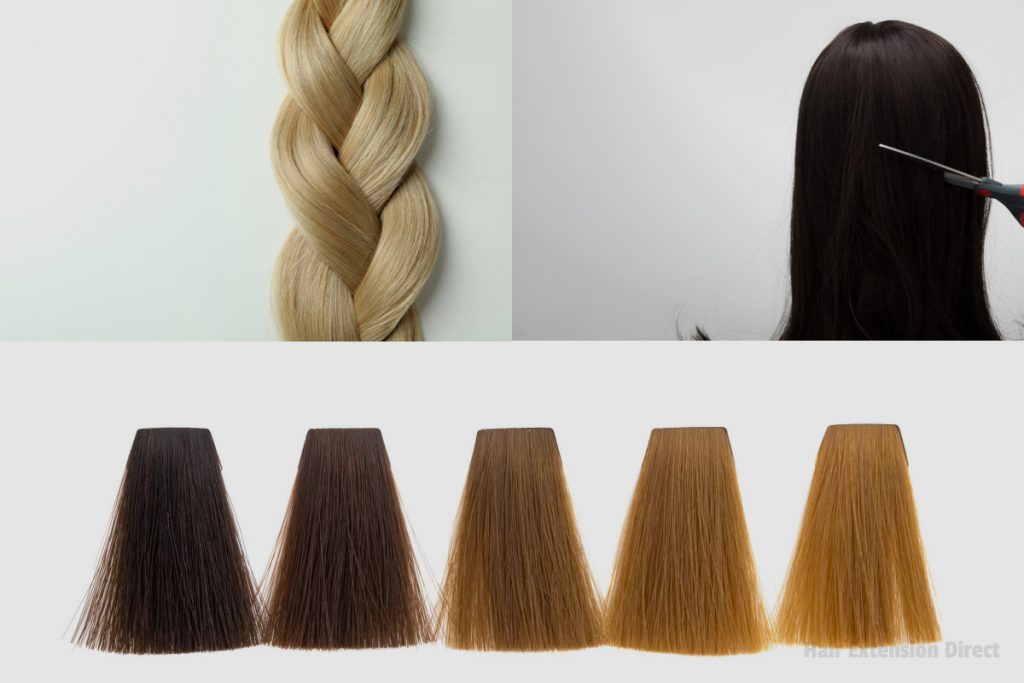
What Are Hair Extensions?
Hair extensions are strands of hair that are added to natural hair to achieve any hair look you desire. There are two types of hair extensions: synthetic and human hair. Synthetic hair extensions are made from artificial fibres and are not as durable as natural hair extensions.
Human hair extensions (also known as natural hair extensions) are made from real human hair and can be styled and treated just like your own hair.
Human hair extensions are usually more expensive than synthetic hair extensions because they last longer and look more natural.
Synthetic hair extensions are less expensive and harder to care for, but they may not look as natural as human hair extensions. Synthetic hair extensions are not tangle-free, causing you to have split ends very often. Split ends are when the tip of your hair looks divided and does not have that natural hair tip.
What Are Human Hair Extensions Made Of?
Human hair extensions are made of 100% human hair that is collected from donors. The amount of hair used to make extensions varies depending on the type of extension and the desired look.
Remy human hair is considered to be the best quality hair for extensions because the hair is kept in its natural state, with the cuticles intact. This type of hair is also referred to as virgin hair.
They respond well to heat, so some of them can be straightened and styled with a curling iron, depending on the type you get, giving room for you to style one hair in very different ways to achieve different looks of your choice.
For example, if you get a straight human hair extension, it can be curled with a curling iron to give you a wavy or bouncy look. The same hair can also be straightened to give you the original straight look.
However, not all human hair extensions are made from Remy’s hair. Non-Remy hair extensions are made from hair that has been collected from multiple sources and is not as high quality. The cuticles are usually stripped from the hair, which can make the extensions more susceptible to tangling and damage.
One of the main downsides of human hair extensions is that they might require some level of special care and attention to keep them looking their best. Also, because they are made from real hair, they can be expensive.
Nevertheless, human hair extensions are a popular way to add length, volume, and colour to your hair. If you are considering getting extensions, be sure to do your research to find the best type of hair for your needs.
Related Post: What Are Human Hair Extensions Made Of?
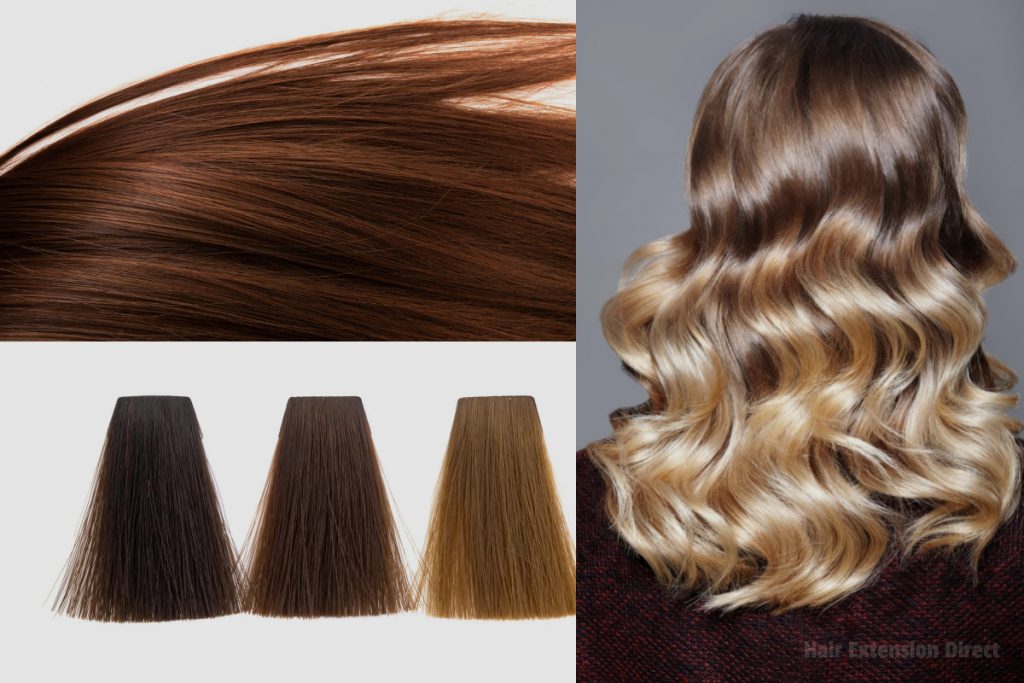
What Are Synthetic Hair Extensions Made Of?
Synthetic hair extensions are made from a variety of different synthetic fibres. These fibres are often designed to resemble real human hair, but they do not always match the same quality or texture.
Synthetic hair extensions can be a great option for those looking for a cheaper alternative to real human hair extensions.
One of the benefits of synthetic hair extensions is that they do not cost very much. It is a suitable option for people on a low budget who want hair extensions to achieve a certain look.
However, one of the main downsides of synthetic hair extensions is that they are much harder to maintain than their human hair counterparts. Some of them do not respond well to heat, making it hard for you to use a straightener or a curling iron on them.
This results in inflexibility as you may not be able to style them to take a different form whenever you so desire. They are also very likely to tangle or shed, creating a need for them to be replaced more often than the human hair extension.
Also, another downside of synthetic hair extensions is that they are not as durable as real human hair extensions. They are also more likely to frizz in humid weather and can be more difficult to style.
Nevertheless, synthetic hair extensions can be a great option for those on a budget or for those who are looking for a low-maintenance option.
What Are The Different Types Of Hair Extensions?
There are many different types of hair extensions available on the market today. The most popular type of hair extension is the weave, which is a type of hair extension that is made from pieces of natural or real human hair that are sewn together onto a weft or strip of fabric.
Weaves can be made from both synthetic and human hair and can be either temporary or semi-permanent.
Another popular type of hair extension is the hair weft, which is a strip of hair that is attached to the natural hair with small clips or glue. Wefts can also be made from both synthetic and human hair and can be either temporary or semi-permanent.
Here are the different types of hair extensions that are popular:
- Weave
- Hair weft
- Clip-in extensions
- Tape-in extensions
- Keratin extensions
- Micro ring extensions
- Pre-bonded extensions
- Fusion extensions
- Flat-tip extensions
- I-tip extensions
- U-tip extensions
- V-tip extensions
- Bulk hair
- Hairpieces
- Wigs.
These are the most popular types of hair extensions, but there are a few more types available on the market.
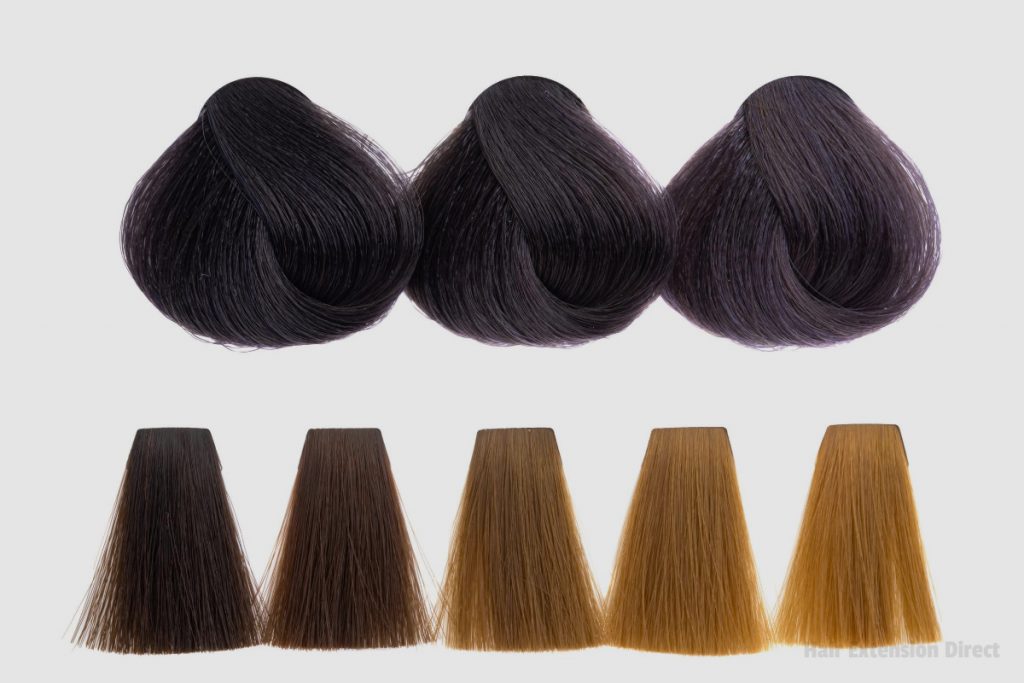
What Are The Best Types Of Hair Extensions?
There are many different types of hair extensions available on the market, and it can be difficult to decide which type is best for you. Here is a breakdown of the most popular types of hair extensions:
- Clip-in hair extensions: These are the most popular type of hair extensions, as they are relatively easy to apply and remove. Clip-in extensions can be made from both human and synthetic hair and come in a variety of colours and styles.
- Weft hair extensions: Weft extensions are strands of hair that are sewn onto a fabric backing. They can be made from both human and synthetic hair and are available in a variety of colours and styles.
- Keratin-tipped hair extensions: These extensions are made from human hair and are attached to your natural hair with a small keratin tip. They are more permanent than clip-in or weft extensions but can be damaging to your natural hair if not applied correctly.
- Fusion hair extensions: Fusion extensions are made from human hair and are bonded to your natural hair with a hot glue gun. They are more permanent than clip-in or weft extensions but can be damaging to your natural hair if not applied correctly.
- Micro-ring hair extensions: Micro-ring extensions are made from human hair and are attached to your natural hair with small metal rings. They are more permanent than clip-in or weft extensions but can be damaging to your natural hair if not applied correctly.
Ultimately, the best type of hair extension for you will depend on your personal preferences and the condition of your natural hair. If you have any concerns about which type of extension would be best for you, consult with a professional stylist.
How Long Do Hair Extensions Last?
Hair extensions can last anywhere from a few weeks to a few months, depending on the type of hair and type of hair extension used. However, it is generally recommended that you get your hair extensions redone every 4-6 weeks to maintain the best look and feel.
Also, it depends on the type of hair extensions you choose. If you choose human hair extensions, they will last much longer than synthetic hair extensions. The only downside to human hair extensions is that they are more expensive.
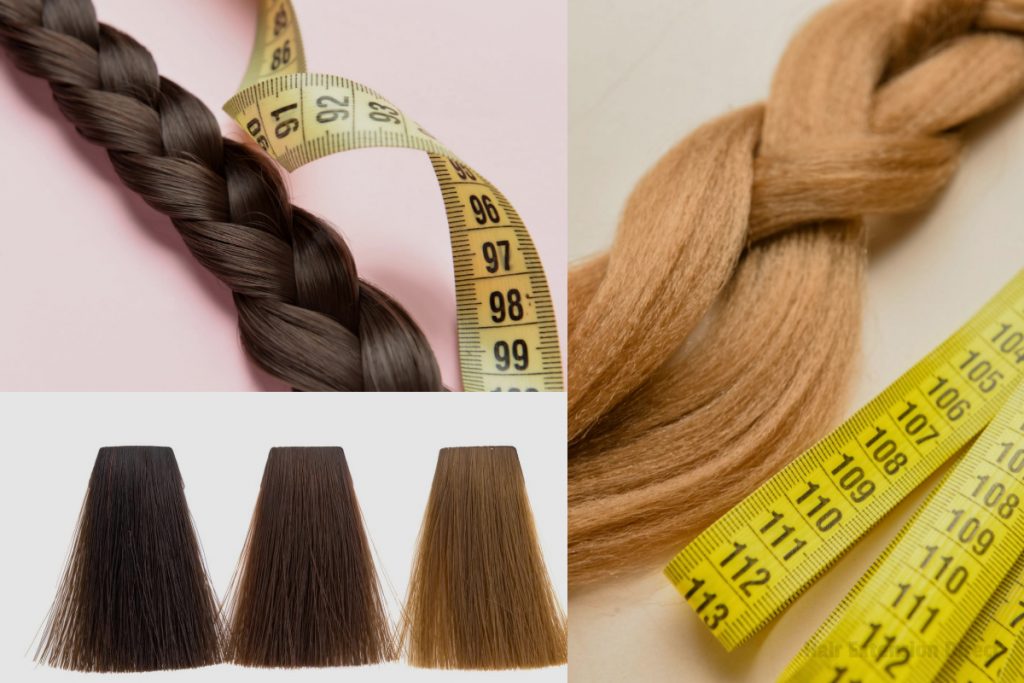
Do Extensions Damage Your Real Hair?
Hair extensions can damage your real hair if they are not applied or removed properly. If the extensions are too tight, they can pull on your natural hair and cause breakage.
If the extensions are not applied correctly, your natural hair can become tangled and matted. If you are not careful when removing the extensions, you can damage your natural hair.
However, if you take care of your hair and the extensions, they should not cause any damage.
How Do I Know Which Type Of Hair Extensions I Should Get?
To know which type of hair extension is best for you, consider the following:
What is your natural hair type? (e.g. fine, thick, curly, etc.):
You need to know your natural hair type in order to get extensions that will blend well. For example, if you have fine hair, you’ll want to avoid getting extensions that are too heavy or thick, as they will weigh down your hair and look unnatural.
What is your desired look? (e.g. long and flowing, beachy waves, updos, etc.):
Your desired look will help dictate the type of hair extension you choose. For example, if you want long and flowing hair, you’ll want to choose extensions that are long and straight. If you’re looking for beachy waves, you’ll want to choose extensions that are wavy or curly.
What is your budget?
The type of hair extension you choose will also be dictated by your budget. For example, clip-in hair extensions are typically the most affordable option, while human hair extensions are usually the most expensive.
What is the occasion? (e.g. special events, daily wear, etc.):
The occasion for which you’ll be wearing your hair extensions will also dictate the type you choose. For example, if you’re looking for extensions to wear to a special event, you’ll want to choose a more permanent option like tape-in or sew-in extensions. If you’re looking for something to wear on a daily basis, you may want to choose a more temporary option, like clip-in extensions.
How much time are you willing to spend on hair maintenance:
The amount of time you’re willing to spend on hair maintenance will also play a role in the type of extension you choose. For example, if you’re not willing to spend a lot of time on hair maintenance, you may want to choose a more low-maintenance option, like clip-in extensions.
In the end, knowing which type of hair extension is best for you will come down to a combination of your personal preferences and your hair type.
If you’re unsure of which type of extension to choose, keep in mind that you can always consult with a hair stylist to get expert advice on which type of hair extension is best for you.

Should I Get Synthetic Or Natural Hair Extensions?
Deciding whether to get synthetic or natural hair extensions is a personal decision that depends on a few factors. Synthetic hair extensions are made from artificial fibres and are usually less expensive than natural hair extensions. However, synthetic hair extensions may not look as natural as real hair extensions and may be more difficult to style.
Natural hair extensions are made from real human hair and can be more expensive than synthetic hair extensions. Natural hair extensions can be styled more easily than synthetic hair extensions and may look more natural.
So, when deciding whether to get synthetic or natural hair extensions, consider your budget, the look you want to achieve, and how easy you want the extensions to be to style.
How Much Do Hair Extensions Cost?
Hair extensions can cost anywhere from £50 to £1000 ($50 to $1000) or more, depending on the type of hair extension, the length of the hair, and the number of pieces you need.
The cost of hair extensions will vary depending on the type of hair extension, the length of the hair, and the number of pieces you need.
Human hair extensions are usually more expensive than synthetic hair extensions, but they can look more natural and last longer.
Semi-permanent hair extensions are a good option if you want to try extensions without making a long-term commitment.
Tape-in hair extensions are a popular type of semi-permanent extension that can be easily removed and reapplied. However, they may not last as long as other types of extensions.
You will also need to purchase hair products, like shampoo and conditioner, to help take care of your extensions. Although, not all hair extensions require special products or will need to be washed as often as your natural hair.
Coming back to the main question, the cost of hair extensions will really depend on your specific needs and wants.
How Do You Take Care Of Hair Extensions?
There are a few different ways that you can take care of your hair extensions, depending on the type of extensions that you have.
If you have clip-in extensions, you will want to make sure that you remove them before going to bed and that you clean them regularly with a mild shampoo.
If you have tape-in extensions, you will need to be careful when brushing your hair and avoid using any harsh chemicals or heat styling tools.
You should also have them professionally removed every 6-8 weeks. If you have fusion or micro bead extensions, you will need to be careful when brushing your hair and avoid using any harsh chemicals or heat-styling tools. You should also have them professionally removed every 3-4 months.
Tips on hair extension care
Here are a few tips to help you take care of your hair extensions:
- Avoid using heat styling tools as much as possible
- Use a mild shampoo and conditioner
- Brush your hair gently
- Avoid sleeping with wet hair
- Store your hair extensions properly.
These tips will help you keep your hair extensions looking their best for as long as possible.
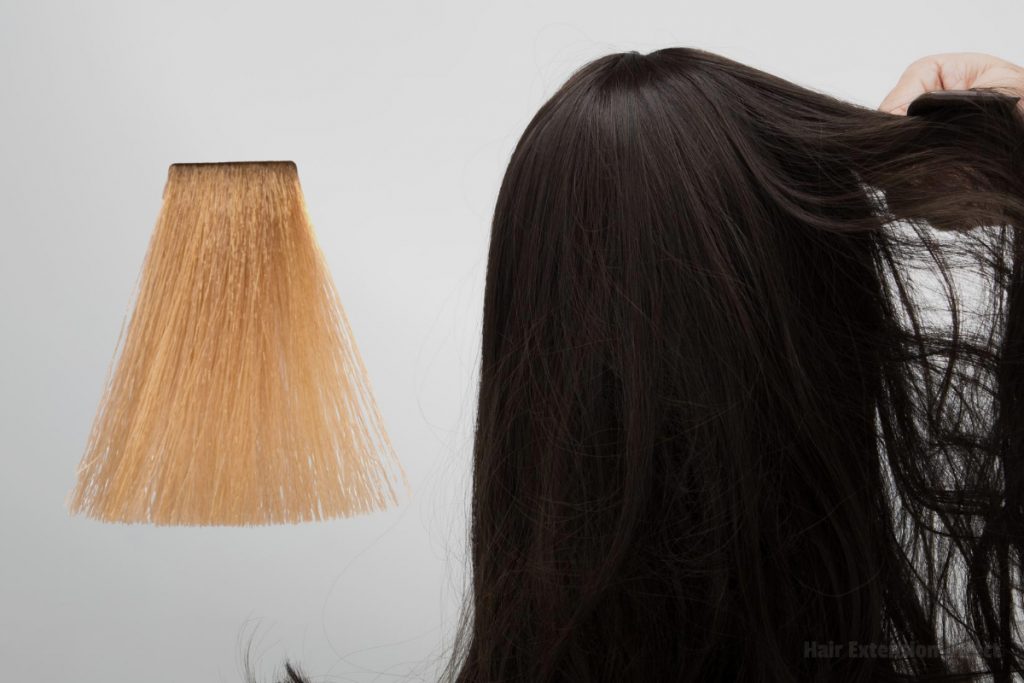
When Should You Remove Hair Extensions?
Hair extensions should be removed every 6 to 8 weeks to prevent damage to your natural hair. Although, if you are using temporary clip-in extensions, you can remove them as often as you like.
Also, bear in mind that different types of hair extensions have different removal timelines. For example, tape-in extensions can last up to 8 weeks, while sew-in extensions can last up to 12 weeks.
It all comes down to how well you take care of your extensions and some level of individual preference.
Pros And Cons Of Hair Extensions
There are many pros and cons to hair extensions; however, here are some Pros And Cons Of Hair Extensions:
Pros
- They can give you the amount of hair you want
- They can make your hair look fuller and thicker
- They can give you the best hair texture
- They can help you achieve different hairstyles
- They are a great way to add length to your hair.
Cons
- Hair extension can be expensive
- Some extension hair may not match your natural hair colour
- The extension hair may not be of the same quality as your natural hair
- Hair extension may not last as long as your natural hair
- Using a hair extension may damage your natural hair.
These are just some of the pros and cons of hair extensions. It is important to do your research to decide if hair extensions are right for you. However, if used correctly, hair extensions can be a great way to change your look.
Conclusion
Overall, hair extensions are a great way to add length and volume to your hair. They can also be a great way to protect your hair from damage.
However, they can also be expensive and time-consuming to maintain. If you are considering getting hair extensions, be sure to do your research and find a reputable stylist.
Also, bear in mind that as much as hair extensions can protect your hair, they can also cause damage if not installed or maintained properly. If you are not careful, you could end up with bald spots or breakage.
Now over to you, what are your thoughts about hair extensions and which is your favourite type?
FAQs
Q: What does a hair extension do?
A: A hair extension is a cosmetic procedure where additional hair is added to your natural hair to add length, volume, or both.
Q: How long does a hair extension last?
A: The length of time a hair extension lasts depends on the type of extension used, how well it is cared for, and the natural growth cycle of your hair. Generally, extensions can last anywhere from 3 to 6 months.
Q: How much does a hair extension cost?
A: The cost of a hair extension varies depending on the type of extension used, the length and volume of hair added, and the geographical location of the salon. Generally, extensions can cost anywhere from £50 to £1000 ($50 to $1000) or even more.
Q: What are the different types of hair extensions?
A: The three main types of hair extensions are clip-in, tape-in, and sew-in.
Q: How do I know which type of hair extension is right for me?
A: The type of hair extension that is right for you depends on your natural hair type and texture, the amount of hair you want to add, and the look you are trying to achieve.
Q: Can I colour my hair after getting a hair extension?
A: Yes, you can colour your hair after getting a hair extension. However, it is important to consult with a professional stylist to ensure that the colour does not damage the extensions.
Q: Can I style my hair after getting a hair extension?
A: Yes, you can style your hair after getting a hair extension. However, it is important to consult with a professional stylist to ensure that the style does not damage the extensions.
Q: How do I care for my hair extension?
A: The best way to care for your hair extension is to consult with a professional stylist. They will be able to advise you on the best products and methods to use to ensure that your extensions last as long as possible.
Q: Is permanent hair extension possible?
A: Yes, permanent hair extension is possible. However, it is important to consult with a professional stylist to ensure that the extensions are applied correctly and will not damage your natural hair.
Q: What are the side effects of hair extension?
A: The side effects of hair extension vary depending on the type of extension used. Generally, the side effects are minimal and include temporary shedding, scalp irritation, and headaches.
Q: Are there any risks associated with hair extension?
A: The risks associated with hair extension vary depending on the type of extension used. Generally, the risks are minimal and include temporary shedding, scalp irritation, and headaches.
Q: What are the benefits of wearing hair extensions?
A: The benefits of wearing hair extensions include the ability to add length, volume, or both to your natural hair. Extensions can also be used to add colour or Highlights without damaging your natural hair.
References: Artificial Hair Integrations, Wig.
